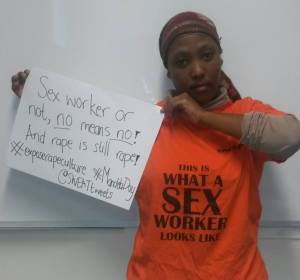‘One is not born, but rather becomes, a woman’ (Simone de Beauvoir 1949).
The sentiment encapsulated in this classic quote is that gender is socially constructed, and not predetermined by genitalia (being born with either a penis or a vagina). That our understanding of the gendered-self is informed by our social environments, and experienced through our social interactions. Indeed, the distinction between sex (as the biological) and gender (as a social construct) can be argued to be the very foundation of feminism (Friedman 2006).
However, Judith Butler argues that our perceptions of sexual differences are actually informed by social conventions. She asserts that sex isn’t just ‘a bodily given on which the construct of gender is artificially imposed, but… a cultural norm which governs the materialisation of bodies’ (Butler 1993). So we are being asked to not only consider gender as a social construct, but sex too.
The concept of sex as a social construct becomes more palatable when you consider the fact that when you meet someone on the street, you don’t ask them to zip down their pants or lift up their skirt for you to conclude what sex you think they are. You consider the social cues they are presenting.
As if things were not confusing enough, Asia Friedman encourages future gender research to, ‘develop an anti-essentialist materialism, attentive to the fleshy materiality of bodies while analyzing that materiality as socially constructed’ [original emphasis] (2006).
Wow – talk about a mind-bender. So not only are we meant to perceive sex as gendered (socially constructed), but we are also being asked to focus on the physicality of it. Is this even possible? I mean – what would this type of research even look like?
…So I’ve been giving it some thought…
Consider a nun and a female sex worker. Let us assume they were both born with vaginas, grew breasts at puberty, and typically present feminine traits (such as being soft spoken, for example). So society would read both of them as women – right? Correct! But society is also most likely to interact with them contrastingly.
The nun being a virgin and/or celibate would be read as virtuous. While the sex worker, who has multiple sex partners (on a good working day) is likely to be considered a whore. These labels carry social implications for the nun and sex worker; with one being clearly more socially acceptable than the other.
This observation has led me to concur with Butler that it is not the anatomy that matters, (and in taking up Friedman’s challenge I add that) it is what you do (or don’t do) with it that determines the social construction of sex. So instead of subsuming sex into gender (which Friedman cautions us against), I turn to the actual ‘doing of sex’. Who I have sex with? Why I have sex (or choose not to have sex)? How many people I have sex with? How do I have sex? These are some of questions we should be considering in our expansion of the concept of ‘gender’, as they take us beyond the essentialist binary of penis and vagina, while still keeping us rooted to the physical. After all, they inform how society largely perceives our identities.
As Gender and Development scholars we need to push ourselves even further, and start asking what are the political and legal implications of the social constructions linked to the answers to the questions above (especially if we intend to be gender advisors in policy-making processes).
This is what I intend to concern myself with during my time here at the Institute of Development Studies (IDS). I feel that sex (as an act) is an element of gender that has been poorly researched within the development framework (maybe because some consider it too crude to engage with). But as eloquently illustrated by Butler and Friedman, it is perhaps the final frontier for us feminists scholars to pioneer.
Now going back to the title of this post – so what is my understanding of gender? …Well, I’m not really sure yet (give me a break – it’s only my third week into this Masters course), but I sure intend to find out, by using sex (the act) as my excavation tool.
References
Beauvoir, Simone. De., Borde, Constance., & Malovany-Chevallier, Sheila. (2010) The second sex. New York, Alfred A. Knopf.
Butler, Judith. (1993) Bodies that Matter: On the Discursive Limits of ‘Sex’. New York: Routledge.
Friedman, Asia. (2006) ‘Unintended Consequences of the Feminist Sex/Gender Distinction’, Genders Journal, Issue 43 http://www.genders.org/g43/g43_friedman.html (Accessed: 12 October, 2014)

Mmmhhhh…. This one sounds very interesting. Can’t wait for more updates from you. #GenderRealIssue
LikeLike
Star
Your approach of trying to think concretely about how society reads and judges the bodies and actions of nuns and sex workers is interesting and I encourage you to expand on this further.
Star
You show a good understanding of Judith Butler’s and Friedman’s arguments and have chosen appropriate citations. It would be good to look at Butler’s critics as well.
Wish
Try to explore further the relationships and distinctions between ‘sex as an act’ and so-called ‘biological sex’ i.e. being labelled as male or female.
Clarifications and tips
– I think you mean “virtuous” not “virtues” in para 8.
LikeLike
Thanks Lyndsay for your feedback. I will implement them as advised 🙂
LikeLike
I believe that is one of the most vital info for me.
And i’m satisfied reading your article. But wanna statement on few common issues,
The website taste is ideal, the articles is truly nice :
D. Good process, cheers
LikeLike